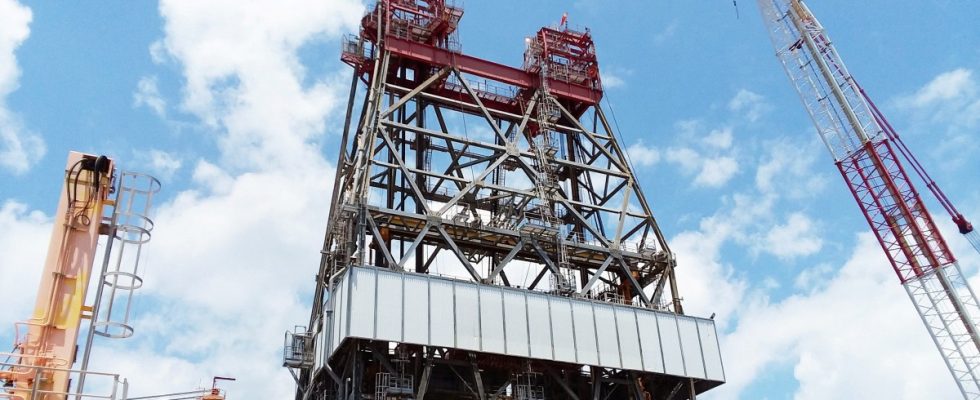In the Gulf of Mexico alone and on the coasts of the neighboring states of the USA, around 14,000 inactive oil and gas wells have not yet been permanently sealed. This is the result of a current study. Oil and gas can leak into the environment from the wells, with the consequences being all the more serious the closer the wells are to the coast. The study by a research group led by Mark Agerton from the University of California in Davis, USA, is in the journal NatureEnergy appeared. The scientists have calculated that the cost of closing these sources alone could be around 30 billion dollars (27.18 billion euros).
When an oil or gas well is taken out of service, it must be carefully and permanently sealed to prevent the release of toxic substances, the climate killer methane, or other hazardous substances. Rods and tanks have to be dismantled, and the soil in the area often has to be cleaned up. According to estimates, however, there are around three million boreholes in the USA that are no longer used but have only been secured sporadically so far. One reason is that depleted wells are ostensibly only shut down temporarily – pending costs are thus shifted into the future, when the company may have long since ceased to exist.
Years ago, a study showed that large amounts of methane escaped into the atmosphere from disused oil and gas wells. According to measurements in the US state of Pennsylvania, abandoned plants there are responsible for up to seven percent of man-made methane emissions, as a team led by Mary Chang from Princeton University in the United States Proceedings of the National Academy of Sciences (PNAS) of the US Academy of Sciences. Methane (CH₄) is the second most important driver of global warming after carbon dioxide (CO₂).
Smaller companies circumvent the law by going bankrupt
Oil and gas producers in the USA are obliged to provide abandoned oil and gas wells with a concrete plug. The process is called “plug and abandonment” (P&A). But: “When producers face declining revenues and are unable to meet their P&A obligations, unplugged wells can become orphaned and pose an increased environmental risk or financial burden on the taxpaying public,” the study authors write.
Companies producing oil and gas in US federal waters must plug abandoned wells with a concrete plug within two years. The state of Texas does the same on its territory, in the state of Louisiana the oil and gas producers have five years. Then smaller companies in particular can already be bankrupt. “Bankruptcy represents a potential avenue for companies to evade regulatory compliance,” write Agerton and colleagues.
The scientists compiled the information about boreholes from data from the Bureau of Safety and Environmental Enforcement, an agency of the Department of Interior, and the energy agencies of the states of Louisiana, Texas, Mississippi and Alabama. They also used data from the energy management software provider Enverus. They differentiated between boreholes that are less than and those more than 1,000 feet (304.8 meters) below the waterline. About 13,000 uncapped wells lie less than 1,000 feet deep, and about 1,000 lie deeper.
The researchers are confident that most sources can be sealed
Divers cannot operate in very deep waters, instead remote-controlled mini-submarines must be used. Also, as the pressure increases, more expensive concrete and generally more expensive material must be used. As a result, capping the 1,000 deep wells is expected to cost $22.7 billion, while plugging wells in shallower ocean regions is estimated to cost $7.5 billion become.
Not only because of the lower costs, the authors of the study advocate sealing the boreholes near the coast. “Compared to coastal ecosystems, the open ocean has lower net primary production, biodiversity and ecosystem services per unit area,” writes Agerton’s team. Also, oil and gas from deep-sea sources would be severely diluted, decomposed, or bound before they could reach coastal regions.
At least the researchers are confident that most of the boreholes considered could be closed in the foreseeable future: 88 percent of the 14,000 wells currently belong or previously belonged to one of the very large energy companies such as Shell, BP, Total, ExxonMobil, Chevron, ConocoPhillips and Eni. The authors of the study assume that they are not in danger of bankruptcy if the state presses them to fulfill their obligations.

